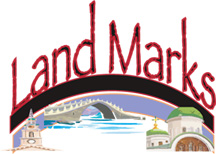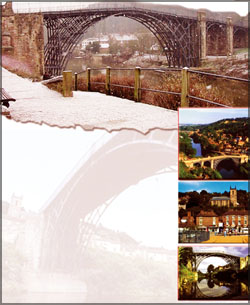|
observer |
|
|
|
|
|
OTHER LINKS |

|

|

|
|
Little Blue Birdie's Diary At the industrial town of IronbridgeDear Diary, This is my very first journal entry for this year. Most people make New Year resolutions. Do you know what my New Year resolution is? To improve my journal even further! I hope to see more new places this year and write about them. And the first place that I and my friends went to see is Ironbridge, a place named after an iron bridge, obviously. Remember, we are still in Britain. It had been in this Shropshire community in 1779 that the first iron bridge in the world was built, a single span of 100 feet crossing the river, Severn.
The journey to Ironbridge, through a lot of greenery, was absolutely lovely. My friends are back to normal after the festive season, and they have also adjusted to the weather. At first, they couldn't even open their wings to their full length, and they slept through most of the winter days. It was fun to travel again and Keshy the skinny bird and Buddy the sporty bird provided most of the humour during the journey. On our way, Aaron, the guide bird, explained the places to us. Ironbirdge had been the first place where an iron boat was built and launched, in 1787. "Onlookers had wagered (bet) that the boat would sink like a stone, but to their utter amazement, it had floated. "A whole new era in shipbuilding was launched," said Aaron.Ironbridge had increased in importance after 1709 when industrialist Abraham Darby initiated the use of coal for somelting (heating and melting are to extract metal) iron; previously charcoal was used for the purpose. Coalbrookedale, as the area was known before, had become a beehive of industrial activity. It was said that the Severn became the second busiest river in Europe, because the ships came into the town through the river. We went close to the river and tried to imagine how it would have looked those days. We imagined how the ships would have come with their loads, how the people would have unloaded them and everything. It would have been real busy then with hundreds of people running here and there. At least six different ferries which had been operating in the 1750s, brought raw ore from the coal mines to the smelters across the Severn. Boats coming up the river had been hampered by silting (blocked by sediments). So, a new bridge had been proposed. The bridge had been built by Abraham Darby , a businessman. Today, Ironbridge and the surrounding areas are a World Heritage Site, recalling their days at the centre of the iron smelting industry that helped to fuel the Industrial Revolution. Ironbridge is crammed with museums and living history exhibits. After visiting these sites, we really felt as if were in a giant industrial theme park. There were nine main museums spread out over six square miles. They were fantastic, taking us to a whole new fascinating world of industrial marvels. Some of the attractions were Coalport china Centre (Museum of the China industry), Blists Hill Open Air Museum (a recreated Victorian town), Ironbridge Gorge Museum (traces the history of iron making here), Jackfield Tile Museum (visitors can watch ceramic tiles being made), the Ironbridge Toy Museum, the Teddy Bear Shop and Museum. It was really fun. There were lots to see and enjoy. In my next entry in the journal, I'm hoping to give more information on the museums stated above. I'd like to share that wonderful experience with all readers of my journal. Nearby is the remains of Buildwas Abbey. Situated in a water meadow beside the Severn, this beautiful ruin strikes a note of contrast with the power station on the far bank. The Abbey had been founded in 1135, and a surprising part of it is still intact. There is a good collection of ancient wall tiles, in addition to massive (14 foot diameter) pillars in the nave. There was also a woodland trail from the abbey along the riverbank. We had a nice time at Ironbridge. More of my travel experiences will be brought to you through my journal. Bye! Comments: [email protected] |












